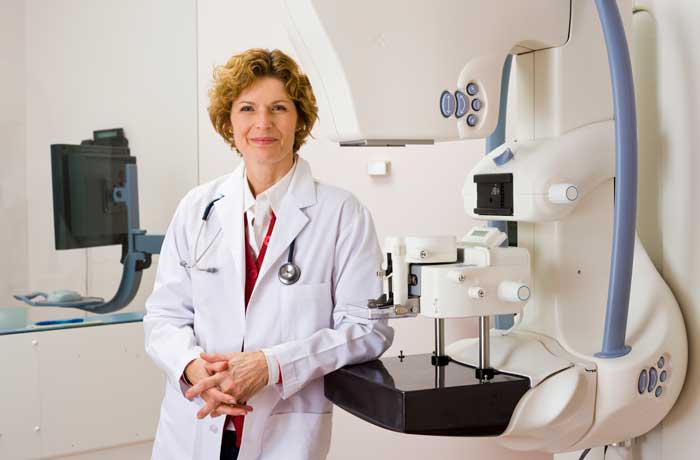Mammography Can Catch Breast Cancer Early, Helping to Improve Outcomes
October 12, 2020
According to the Centers for Disease Control and Prevention, breast cancer is second only to skin cancer as the most common cancer among women in the United States. The purpose of screening mammography is to find cancer at its earliest, most treatable stages, when it still may be too small even to be felt by your doctor or detected during a breast self-exam. Recent studies by the National Institutes of Health indicate that screening mammography can help reduce the number of breast cancer deaths among women ages 40 to 70.
At LWRMC, women have access to advanced 3D mammography with precision imaging and enhanced patient comfort features that make testing more comfortable, even for women with dense breasts. “My mammogram was very fast and comfortable,” says patient Amy Lefkoff. “Women are sometimes afraid of mammograms because of the pain it can cause, but this mammogram did not cause pain during compression, as I’ve experienced with previous mammograms.”

Diagnostic Mammogram: Know Before You Go
If your provider has recommended that you receive a diagnostic mammogram, our goal is to help you “know before you go.” This means that while you wait, a radiologist will analyze your images. You will be provided with the preliminary results and recommendations for follow-up before you leave the Breast Health Center that day.
“Regular screenings can help women increase their chance of surviving a cancer diagnosis,” says Tracy Legutko, RTRM, Breast Health Supervisor. “We understand, you have a choice of where you go for breast imaging. Our team strives to provide the best care in the friendliest atmosphere, while treating you like family.”
“In my 21 years of annual mammography appointments, I’ve never experienced so much kindness,” says Lefkoff. “It was hot. I was wearing a mask and breathless. Tracy offered water and made me feel so comfortable.”
Due to the Breast Health Center’s safety precaution of staggering appointments during COVID-19, Lefkoff also noted that she was the only one in the waiting room on the day of her appointment. This helped her to feel safe, too.
